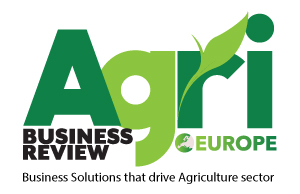Thank you for Subscribing to Agri Business Review Weekly Brief
The Growing Influence of Organic Phosphates in Global Export Agriculture
The move toward sustainable agriculture is increasingly fueled by organic phosphates, which tackle resource limitations and environmental challenges while satisfying global market demand for eco-friendly export crops.

By
Agri Business Review | Friday, October 31, 2025
Stay ahead of the industry with exclusive feature stories on the top companies, expert insights and the latest news delivered straight to your inbox. Subscribe today.
Fremont, CA:The global agricultural landscape is steadily embracing sustainable and environmentally responsible practices. Central to this transformation—especially in the high-value domain of export agriculture—is the growing adoption of organic phosphates. This shift is propelled by rising environmental concerns, increasing consumer demand for organic products, and the limitations posed by traditional, mined rock phosphate fertilizers.
Phosphorus and the Sustainability Challenge
For decades, global agriculture has depended on inorganic phosphorus fertilizers sourced from mined rock phosphate, a finite resource concentrated in a handful of nations, most notably Morocco and China. This dependency poses significant concerns over resource depletion and “peak phosphorus”—the anticipated point at which production reaches its maximum and then declines—coupled with market volatility and export restrictions by major producers, has driven fertilizer prices to unprecedented levels and exposed the vulnerability of the global food system. The environmental consequences of inefficient fertilizer use are also profound, as excess phosphorus often leaches into waterways, triggering eutrophication, algal blooms, and oxygen depletion that compromise water quality—an especially pressing issue for export-driven agricultural regions.
The Organic Alternative: A Sustainable Solution
Organic phosphates, derived from sources such as animal manure, compost, plant residues, and processed sewage sludge (biosolids), present a sustainable solution to the twin challenges of resource scarcity and environmental management. Their adoption is strongly driven by the global shift toward a circular economy, where nutrient recycling plays a central role. By recovering phosphorus (P) from urban and livestock waste streams, organic fertilizers “close the loop,” offering a renewable supply of this critical nutrient while simultaneously reducing waste disposal pressures. This approach is particularly significant in regions like the European Union, where reliance on limited rock phosphate reserves has heightened the importance of nutrient recovery for long-term phosphorus security.
Beyond resource efficiency, organic phosphates enhance soil health and nutrient bioavailability in ways that synthetic fertilizers often cannot. Their slow-release nature, mediated by soil microbes breaking down organic matter, improves the solubility and accessibility of phosphorus, particularly in soils prone to phosphorus fixation. At the same time, the incorporation of organic matter enhances soil structure, water retention, and microbial diversity, contributing to more resilient agricultural systems. These benefits are especially valuable for high-value export crops, where long-term soil productivity and sustainability are critical to competitiveness.
Growing market demand for organic and sustainably produced food further accelerates the use of organic phosphates. Consumers in key markets such as North America and Europe are increasingly willing to pay premiums for produce cultivated with non-synthetic inputs. Export-oriented agriculture, closely aligned with international certification requirements, is therefore compelled to adopt organic nutrient sources. Certification standards often restrict or prohibit the use of conventional mineral fertilizers, making organic phosphorus essential for market access. In addition, global exporters gain brand differentiation and compliance with sustainability mandates by integrating recycled, eco-friendly inputs, strengthening both their market position and environmental stewardship.
The future of phosphorus management in export agriculture points firmly toward greater reliance on organic and recycled sources. Investment in research, technology for nutrient recovery, and the development of high-quality, pelletized organic phosphorus products will be key to overcoming current limitations. The rise of organic phosphates is not merely an agricultural trend; it represents a fundamental shift in how the global food system manages one of its most critical, yet finite, resources, ensuring both food security and environmental stewardship for the export market and beyond.





